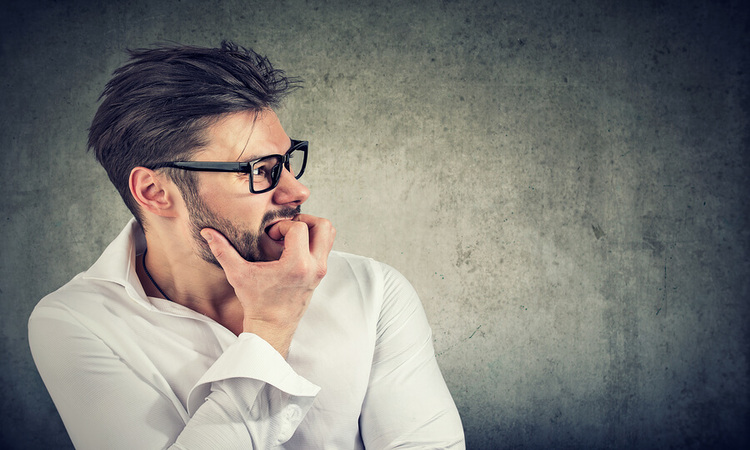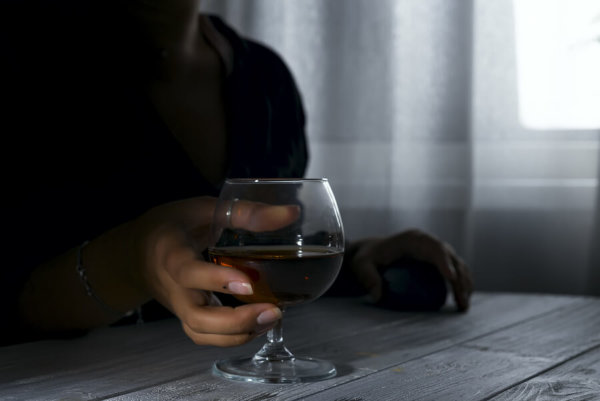
How to Reduce Anxiety – Although it is an entirely reasonable human response, anxiety is also an emotional reaction that can cause us to over-examine situations and paralyze us when we encounter critical decisions or fearful circumstances. An anxiety disorder may develop when anxiety continues for a prolonged period and begins to interfere with daily functioning.
Anxiety is an unpleasant and sometimes terrifying emotion, and, understandably, some people try to find ways to prevent, or deaden these feelings. While drugs and alcohol may mitigate anxious feelings in the short term, substance abuse can and does tend to make anxiety worse in the long run.
Fortunately, there are much better, healthier ways to cope with anxiety than through the use of drugs and alcohol.
Common Symptoms of Anxiety
- Sweating
- Trembling/shaking
- Shortness of breath
- Chest tightness
- Rapid heart rate
- Muscle tension
- Sleep disturbances
- Irritability
- Feelings of impending doom
- Difficulty concentrating
- Ruminating on negative thoughts
- Panic attacks
People who experience these feelings may engage in unhealthy behaviors as a means to escape, prevent, or reduce anxiety, such as the following:
- Avoiding situations that foster anxious feelings
- Withdrawing from others/social isolation
- Abusing substances to self-medicate
These means of addressing anxiety may be somewhat helpful in the short-term but can result in chronic problems. Moreover, they disconnect individuals from their potential support networks and can worsen the underlying issues that contribute to anxiety instead of resolving them.
Why Do People Use Substances to Deal With Anxiety?

The answer may seem obvious at first, but there’s actually real science behind it. In research, people with chronic anxiety have been shown to have an overactive amygdala, a region of the brain that is responsible for fear and anxiety-related memories. The amygdala interacts with a stress response subsystem in the body called the HPA axis.
The HPA axis (hypothalamic-pituitary-adrenal axis) is a complicated set of interactions between the hypothalamus, the pituitary glands, and the adrenal glands that are located at the top of each kidney. The HPA axis is associated with stress and is responsible for the release of cortisol, which prepares the body for a fight-or-flight response.
Gamma-aminobutyric acid (GABA) is an inhibitory neurochemical that counteracts the excitatory neurotransmitter glutamate. GABA can suppress thoughts, emotions, and behaviors, while glutamate leads to an excitatory effect. The balance between these two chemicals significantly contributes to whether a person is feeling relaxed and calm or alert and anxious.
Other chemicals, namely dopamine, serotonin, and norepinephrine, also play a vital role in the development of emotional states such as anxiety. Pharmaceuticals can address a chemical imbalance issue by using agents that target and modify the GABA system in a way that reduces anxiety.
Some people resort to using drugs and alcohol to cope with anxiety because increased GABA activity increases feelings of relaxation. Unfortunately, however, it’s only a short-term respite from stress.
How to Reduce Anxiety Substance-Free
Fortunately, many self-help methods target the same anti-stress mechanisms in the brain that do not produce the adverse effects that alcohol and drugs wreak on one’s life.
Mindfulness & Meditation
Mindfulness is a method of focusing that helps the person practicing become more connected to his or her thoughts, emotions, and body. There are many ways to integrate mindfulness techniques into one’s life, and getting started is simple.
To begin, sit in a relaxed position and breathe deeply. Breath in slowly and hold it for four seconds, and gradually release it over five seconds. Pay close attention to breathing, and if the mind begins to wander, acknowledge the thought without judgment, and then let it go. Return to focusing on the breath.
Mindfulness helps the practicing individual remain firmly in the present without ruminating over the past or worrying about the future. It has also been shown to promote inhibitory control in the brain, which is precisely the remedy for anxiety.
Yoga
Like mindfulness, yoga is another practice that reduces anxiety through breathing and centered attention on the body. Yoga requires deep breathing during uncomfortable and sometimes awkward positions and encourages people to breathe through stress using only the mind and body. It does this, in part, because it increases GABA levels, which promotes relaxation.
Cognitive-Behavioral Therapy (CBT)
Mental health professionals often use cognitive-behavioral therapy as a technique to identify, challenge, and modify thought processes to alleviate the symptoms of anxiety. CBT is goal-oriented and requires the participant to engage in activities and practice at home outside of therapy.
Part of feeling anxious involves one’s own interpretation of biological and chemical changes. CBT works to reframe negative beliefs and thinking patterns, helping people mitigate their subjective experience of anxiety.
Make Informed and Healthy Choices
Certain lifestyle choices can affect our mental and emotional state and hinder or promote our ability to deal with stress. Positive, healthy practices, such as the following, can serve to reduce stress and increase resilience and overall well-being:
- Eating healthy
- Engaging in regular exercise
- Developing a healthy sleep routine
- Taking time to rest
- Engaging in fulfilling and enjoyable activities and hobbies
- Avoiding caffeine and other stimulants
- Taking medication (if any) as prescribed
- Seeking support from family, friends, groups, and mental health professionals
Treatment for Addiction and Anxiety
Integrated treatment is a comprehensive rehab program that provides all the medical, therapeutic, and holistic resources essential to help clients heal physically, mentally, and emotionally.
Each client should have a customized treatment plan, but for those who are living with both an addiction and a mental health disorder, an integrated treatment program may typically include the following services:
Medical Detox
For those who struggle with drug or alcohol addiction, the detox period, or the first days following the cessation of substance use, can be characterized by unpleasant physical and mental withdrawal symptoms. Detox services provide medical and mental health support to clients with and monitoring, if needed, to help them stabilize during treatment.
Evaluation and Diagnosis
To ensure that all co-occurring mental health symptoms are accurately diagnosed, an evaluation is the next step in integrated treatment. Also, all other issues that may be barriers in the client’s path to recovery are identified. Based on the evaluation results and the reported experiences of the client, diagnoses are identified to help the client understand and frame past experiences and prepare for the future.

Treatment Planning
A customized treatment plan is developed for each client that combines an array of therapeutic and medical interventions to empower the client to recover from addiction, learn how to manage mental health conditions, and address personal issues that may be problematic.
Individual Therapy
One-on-one therapy is the basis for recovery, as it provides the client with a safe and confidential forum to address past experiences, current issues, changes that occur during therapy, and goals for the future. As treatment goals are achieved based on the initial treatment plan, the client can collaborate with the therapist to identify new therapy goals and modify the treatment plan accordingly.
Group Therapy
There are a variety of groups that may be employed as part of an integrated treatment program. These include 12-Step groups, groups that focus on a specific aspect of addiction, support groups for people who experience the same mental health issues, and groups that help members cope with a commonly shared life issue, such as parenting or legal problems.
Family Therapy
Working together with friends and family to repair relationships damaged during active addiction and untreated mental health symptoms can play a huge role in recovery. This is especially true if the client will be returning home to live with family members after treatment has been completed.
Aftercare
Before leaving treatment, clients are urged to work with a therapist to create an aftercare plan. This plan should include a combination of therapeutic services that meet the person’s needs during and after the transition into independent living.
Getting Help for Addiction and Mental Illness
Using an integrated approach to addiction and the factors that drive it, we provide patients with the tools, skills, and support they desperately need to achieve a full recovery and enjoy long-lasting sobriety and wellness.
If you or a loved one are suffering from an addiction to drugs or alcohol and a co-occurring mental illness, please contact us today!
READ THIS NEXT: Types of Anxiety and Addiction